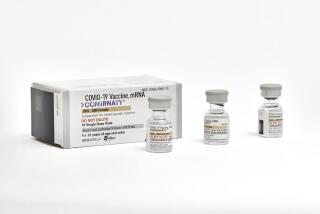Malathion Controversy
- Share via
Your article (“Man Behind Malathion Safety Study Disavows It,” Part B, Feb. 6) leaves the impression that the only transgression of California officials who altered the Medfly risk assessment that I co-wrote and directed was to make an “insignificant” change in one portion of our calculations. In fact, the change made was consistent with the wholesale exclusion of the major portion of our conclusions regarding the uncertainty which existed (and still exists) over the long-term safety of such a spray operation. By fudging the numbers on our cancer risk assessment so that the apparent risk was no more than 1 in a million, it was possible for the reviewer to keep the artifice that the report issued an “all clear” for malathion spraying.
In fact, the 1980 report, on which the state still relies, itemized residual concerns about genetic damage, cancer and birth defects in exposed populations. Some of these issues, specifically those relating to chromosomal damage, are critically important to resolve, since it is possible that no threshold exists for producing such an effect. Repeated sprayings, on often vulnerable populations, may lead to exposures that are cumulative in their effects.
Obviously, what is needed is a fresh look at the entire spectrum of health consequences of spraying a mixture of chemicals. In the original report, the major sections had to be limited to pure malathion, not the commercial grade which is currently being used. It is this grade which has the greatest proclivity for producing damage--and it is widely known that its toxicity is greater (depending on the extent of contamination with more noxious alkylating agents) than is malathion alone. The decision to convene a panel of such experts is long overdue.
In the meantime, it is worth asking what the response of any governmental agency would have been if experimental data and conclusions were altered in the manner that my report was in 1980. Such manipulation of data and distortion of clearly stated conclusions regarding residual concerns of safety might well be labeled fraud.
MARC LAPPE
Prof. of Health Policy & Ethics
University of Illinois
College of Medicine






